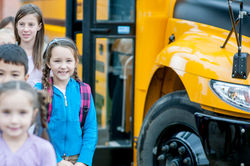
Parents Guide to Social-Emotional Development in Infants
 |  |  |
|---|---|---|
 |  |  |
Social Learning Theory
Albert Bandura's social learning theory states the behavior is learned from the environment through the process of observational learning. During various stages of the development process, the parents are responsible for the environment their children are exposed to. From birth children observe behavior in diverse forms. When they are observing someone preforming a behavior, the individual is referred to as a model. Models could range anywhere from parents, siblings, extended family, friends, and teachers. While observing different models the infants might use imitation to repeat the examples they percieve.
Children model their parents sometimes without parents knowing. The activity we demonstrate for this section is for parents to demonstrate being respectful and polite at all times infront of their child. After a period of time, the child will also demonstrate this behavior. This shows parents that they are being watched and it will give them a better undertstanding how much of an influence they are to their child.
Vicarious Learning
Albert Bandura also created another social learning theory. Vicarious learning is learning through the eyes of others. For example, when an infant around the age of two witnesses another infant getting in trouble they can learn from the situation and not repeat that action. Both reinforcers and punishers help distinguish favorable and unfavorable behaviors. If they see another baby getting rewarded they will be more likely to repeat that behavior.
For this after school session, we place children in a play area with toys. The parents observe their children react in certain situations with other children. When one child gets rewarded for acting in a certain way such as sharing a toy, the children who observed this task will notice this and will be likely to act in this manner.
Understanding Emotions
The process of social emotional development is a child’s development of trust in their approach to and security in their place in the world. When your baby is secure in their relationship with you they understand that no matter what you’ll be there to help them settle and give them a feeling of security. This sense of safety provides the infant with a better comfort level to reach out and explore the world. Self-awareness is another factor that babies begin to better understanting of themselves. They better learn how to control their muscles and body movement such as legs, hands, and fingers. They will also understand more about their emotions. Around the age of two they will know the feeling of comfort and discomfort.
For this activity parents learn more about recognizing emotions and helping children understand the emotions they are expressing. We place the children between ages two and four in a play ground area. The parents participate with and observe the children playing. If one of the children express an emotion such as happiness or sadness we explain to the child what emotion they are expressing. There is also information for parents to handle different emotions for each age range.